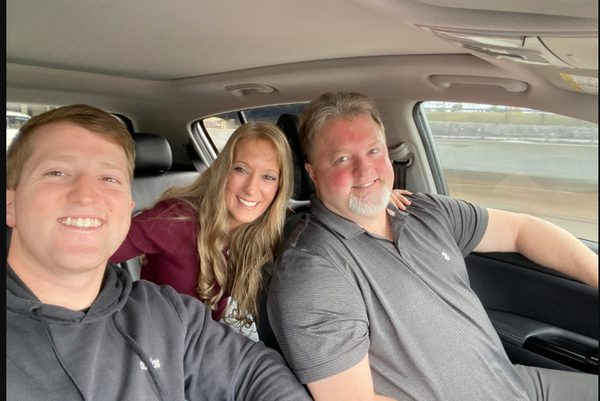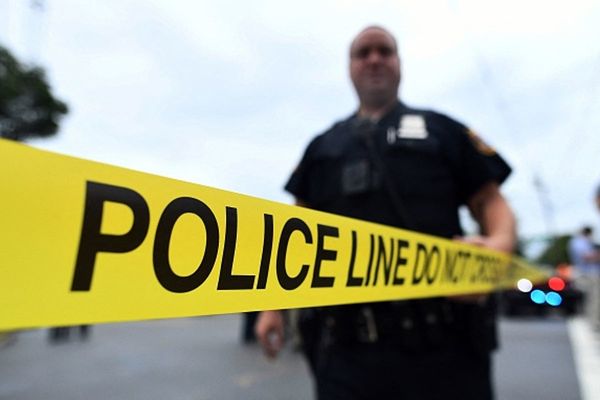
The 2022 midterm election delivered surprising results, with Democrats maintaining more House seats than projected and a Republican “red wave” failing to materialize. As the forces driving these come into focus, one group proved to be key: young voters.
While final figures are still pouring in, it is estimated that 27% of young voters aged 18-29 cast a ballot in 2022, making this the midterm election with the second highest youth voter turnout in almost three decades, after 2018. In some key battleground states, turnout was even higher, at 31%, and support for Democratic candidates was roughly over 60%, driven in large part by the fight for abortion rights after the supreme court overturned Roe v Wade.
An Edison Research National Election Pool exit poll showed that 18-29s were the only age group in which a strong majority supported Democrats. Support for Democrats was even higher among Black youth at 89% and Latino youth at 68%.
It is a trend that continues from the 2018 and 2020 elections, where youth voter turnout – historically perceived as low – surged and proved to be a crucial voting bloc, particularly for Democrats. But some young voters struggled to cast their ballot – raising questions about the particular hurdles this group faces to have a voice in elections.
“There’s very much a popular belief that young voters are apathetic, and actually the data shows that it’s quite the opposite. This is the most politically engaged cohort of young voters in American history – even higher than in the 1960s in the United States,” said Cristina Tzintzún Ramirez, president of NextGen, a progressive youth advocacy non-profit and political action committee.
“They’re voting more. They’re participating in protests. They are more avid readers of politics and social issues. So I think that that surprises a lot of people about young voters.”
This sentiment couldn’t be more apparent than in Florida’s 10th district, where the US has found its first Gen-Z member of Congress in 25-year-old Maxwell Frost.
“I am Congressman-Elect Maxwell Alejandro Frost and I will be the first member of Generation-Z in the United States Congress. WE MADE HISTORY!!! Don’t count young people out,” the young politician wrote on Twitter shortly after his win.
Ramirez said that Democrats also have the youth to thank for key Senate race victories. “In Pennsylvania, we contacted 2.1 million young eligible voters, [which is] nine out of 10 young voters in that state. John Fetterman is the new senator of Pennsylvania because of young voters.”
According to exit polls, 70% of young voters in the state turned out for Fetterman, a historically high percentage for Democrats in Pennsylvania.
College voters are a key subset of that youth vote.
On Tuesday, there was a barrage of images on social media of lengthy lines formed at university polling sites. At the University of Michigan, some students waited for six hours to vote, casting their ballot at 2am. Michigan allows for same-day voter registration, which is popular with young voters.
THIS IS HUGE! The line of students at Texas State University voting this morning on Election Day is out the door and wrapped around the entire building!
— NextGen America (@NextGenAmerica) November 8, 2022
Don’t ever say young people don’t vote. pic.twitter.com/sLUkeS7Ax6
In Texas, one of the most difficult states to cast a ballot, and where student IDs are not an acceptable form of identification, accounts emerged of students still waiting in line to vote after polls officially closed at 7pm Central time at the University of Texas at Austin and Texas State University in San Marcos.
But while college students can be motivated to vote, they often face significant obstacles. In the small town of College Station, halfway between Houston and Austin, Texas A&M University students were denied an early voting polling site on campus altogether by Brazos county officials.
Before the 2022 midterm elections, the officials decided to remove the on-campus Memorial Student Center early voting site used in the 2020 election, citing low voter turnout at that location. But the Texas Tribune reported that Texas A&M’s Memorial Student Center polling site had the second highest number of early voters in the 2018 and 2020 general elections in the county.
Texas A&M student Kristina Samuel, 21, is the president of her school’s chapter of Move (Mobilize. Organize. Vote. Empower.), the non-partisan and non-profit organization aimed at increasing voter turnout among young Texans. She told the Guardian that having an early voting polling site on college campuses was “a no-brainer”.
“We have been demanding a second on-campus polling location for years, so the fact that we got the only polling location taken away from us for early voting, especially as our student population has exponentially been growing and we have become an HSI (Hispanic-serving institution) this year has made no logical sense,” she said.
Samuel and her organization consulted election lawyers and invoked the Texas election code in order to make their case to county commissioners for an on-campus early voting location. While their efforts have yet to pay off, her age cohort still showed up in great numbers.
One reason youth voter turnout was surprising to many in this election is because traditional polling failed to accurately capture the demographic.
Rather than investing in phone banking and television advertising, Ramirez said it was more effective to gauge youth political opinion on social media and dating apps like Bumble and Tinder, which her organization does.
Before the next election, you might want to find a better way to poll anyone under the age of 30 since they would rather pick up a pinless grenade than a call from an unknown number.
— Ben Collins (@oneunderscore__) November 9, 2022
“We didn’t pay for one TV ad to reach young people. We did have streaming ads, like on Hulu, but on traditional TV, we had zero ads. We’ve never done a TV ad, and we never will do a TV ad,” she said.
Without the major turnout of younger voters, we would have seen a very different outcome in last night's elections. But now I am asking the younger generations: continue to stay engaged in the struggle. We have an enormous amount of work ahead of us. pic.twitter.com/JS8ks6SwzH
— Bernie Sanders (@BernieSanders) November 9, 2022
As the power of the youth turnout this election season becomes increasingly clear, Democratic politicians offered their gratitude to the youth for showing up in such large numbers.
“I especially want to thank the young people of this nation, whom I’m told, I haven’t seen the numbers, voted in historic numbers again, just as they did two years ago. They voted to continue addressing the climate crisis, gun violence, their personal rights and freedoms, and the student debt relief,” said President Joe Biden.
Senator Bernie Sanders thanked young voters on Twitter and asked them to remain politically engaged.
“Without the major turnout of younger voters, we would have seen a very different outcome in last night’s elections. But now I am asking the younger generations: continue to stay engaged in the struggle. We have an enormous amount of work ahead of us,” he said.







